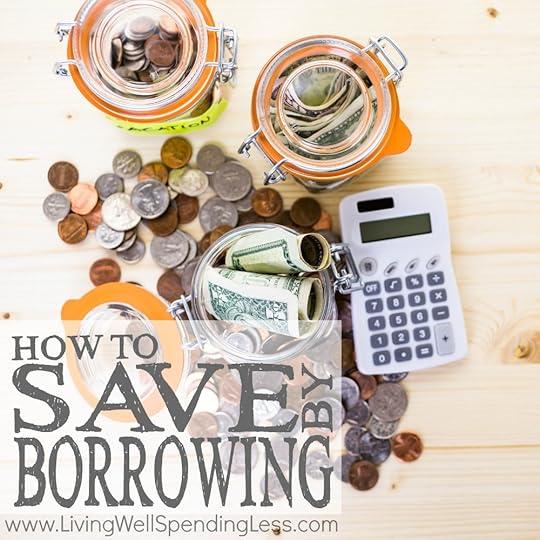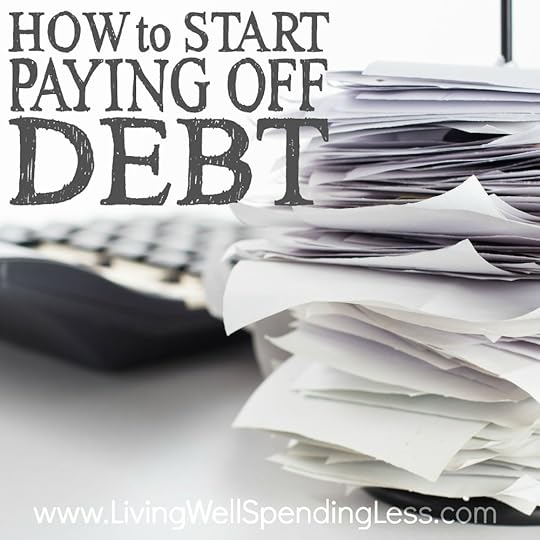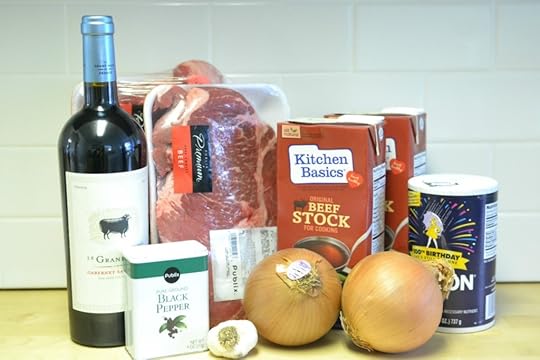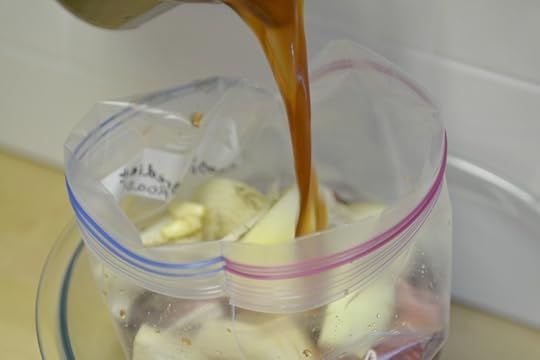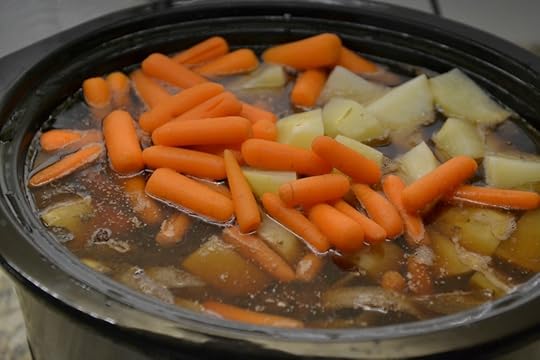Ruth Soukup's Blog, page 67
January 29, 2016
How to Save by Borrowing
As a mom of two girls, I know those words “share with your sister” all too well. One of the things I’ve learned from my kids is kids don’t really mind sharing. In fact, it comes pretty naturally. It’s much more fun to share doll clothes, dress ups, shoes or toys with friends. Sharing means everyone can participate in the fun.
As adults our “sharing” mentality gets lost sometimes. We’re so used to having our own car, own house, and own “stuff,” we even can become bogged down by it. Owning too much, let’s face it—gets expensive. If you own a car or TWO cars, you have to pay for maintenance, you have to pay to have somewhere to store your cars, you pay for insurance, and you pay license and registration fees. It adds up.
There are areas where many of us have gotten used to borrowing and sharing what we need—books from the library, DVDs from Redbox, and tips and tricks online. There are other areas where we maybe don’t want to share so much or haven’t thought of the possibility of borrowing to save us from buying an item.
Fortunately, with the myriad of online forums, there are tons of ways you can find the things you need—you can borrow, swap and share your way into having almost anything you might want or need: think yard tools, media, craft items, clothing, baby items and even services! The Internet is a great resource and with social media, it’s simple to get the items you need or want.

Hit Up Social Media
Besides simply asking a friend or neighbor if you can borrow an item, for most basic items, social media is the place to go. Post on Facebook (or Twitter, if you prefer) and you’ll be amazed at how many friends rise to the occasion. It’s a great way to find things other people’s kids have outgrown and it’s always a wonderful resource for borrowing things for a one-time use (a special accessory, a tool, a craft item…the list is endless). You can even send out an APB if you need to “borrow” a helping hand now and again.
You can also try joining neighborhood groups on Facebook or swap/trade groups. Many areas have groups full to the brim with people eager to share and trade items for their little ones. If your neighborhood doesn’t have a group, try your child’s school’s page or your church, or look for a listserve catered to your neighborhood or area.
Search on Exchange Websites
Sites such as Freecycle, and of course Craigslist offer a great selection of free or nearly free treasures. Whether you need a card table and chairs for a dinner party, a gently used tent for camping, or kids beach toys, you can find almost anything you’re looking for by checking the listings.
If it’s not urgent, don’t be afraid to bargain, make trade offers, and hold out until the right item comes along. I have friends who landscaped their entire yard with beautiful fieldstone for FREE, simply by watching Craigslist and waiting for extra stones to pop up. If you’re creative and not too impatient, you can hold out for exactly what you need or make a free item work in just the way you’re hoping!
Using sites like Craigslist and Freecycle, you can upcycle some pretty amazing items for cheap or free. You’d be amazed at what a little paint, some sanding and some elbow grease can do. Even items you see discarded on the curb can often be refurbished and repurposed. (Not to advocate you start picking up everyone’s trash—only go for the items you truly need or have a purpose for.) You can even sell your upcycled creations for cash.
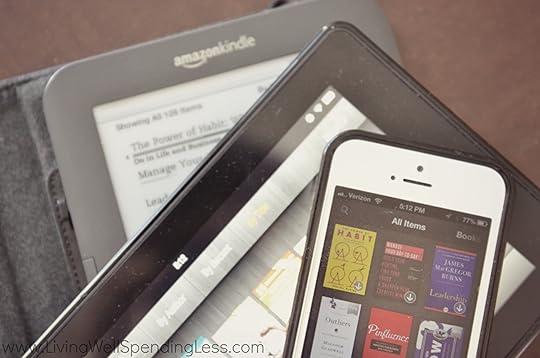
Easy Media Sharing
So, as I’ve said before, I LOVE my Kindle. It reduces bulk and clutter, and it makes it easy to share and trade books. Many libraries will allow you to check out eBooks, just like you would check out regular books. It’s very easy and you don’t have to run around looking for library books every few weeks.
Speaking of libraries, they can also be a great place to find DVDs, music, magazines, and children’s books—things you would ordinarily shell out for and then use just a few times. There’s really no reason to pay to “own” movies, you then have to store or digitally store.
As far as borrowing music goes, Spotify, Pandora and Apple Music are all streaming services that allow you to listen to or “borrow” music without having to buy it. For a small monthly fee, you can stream as many songs as you like—and let me tell you: there’s almost everything under the sun. You can create playlists to fit your moods, your jobs, your workouts—whatever you need. The great thing is you don’t have to stress about how to organize your MP3 files or worry about paying for cloud storage. You can also toss all those CDs you might still be holding on to.

Free Borrowing Resources
Once you have the borrowing and swapping bug, go nuts! See if you can “trade up” for things—you can even make it a challenge! There are tons of different, online borrowing/swapping resources you can try. Here are just a few to get you started:
This app lets you post photos of items you’d like to trade or get rid of (any item under ten pounds). You print the prepaid shipping label, send your item to a recipient, and you receive points you can use towards any item on the Yerdle site.
Similar to Yerdle, but for books, you simply list your books, receive requests, mail your books for points and then use your points to trade for books from others. It’s like an organized swap meet and it’s free to try.
If you have clothes to trade or if you’ve just cleaned your closet (or your kid’s closet), try Swap. You can swap your clothes for other sizes and other items on the site, and trade with other members. There are easy returns and combined shipping.
If you have items to trade for things you’d rather have, BarterQuest is a great resource. It’s free to post and search, and you can literally find everything from a boat to a wedding venue to local honey. Put up what you have to trade and see what you can get on exchange.
The Listia app allows users to trade in items they no longer want or use for points and use them for other items they need. You get 1000 free credits just for joining.

Yep—borrow a car! City-dwellers and those who simply don’t need a car every day, might want to consider Zipcar. Once you’re approved to join, you get a card that provides you with access to Zipcars, which can reserved and picked up for a few hours use or even a day. You don’t ever have to worry about getting the oil changed or paying for long-term parking, and you simply return the car when you’re done with your errand.
Borrowing a house might seem strange, but Airbnb offers travelers the ability to use a low-cost space for a short period of time, while the owner is away. This can be a great way to save. While you don’t have the amenities of a hotel, you can rent a space to stay for much less. You can also sign up to host, so you can earn cash while you’re out of town.
If you want to learn something new or if you have something you think you could teach online, check out Skillshare. For a very small membership fee, you gain access to hundreds of tutorials, from baking a cake to learning conversational French. You can share your skills as well, and for each membership purchased, a membership is also give to a student in need.
This cool site connects potential farmers and gardeners with the land and space (and tools) to start growing! You can post your space if you have spare land you don’t have time to garden OR you can find somewhere to host your family’s garden this year, if you don’t have room. This site builds community collaboration and green space, allowing everyone to start growing and harvesting.
What it really comes down to is we’re all very blessed to have such bountiful, plentiful lives. Many of us have things beyond what we need and use, and rather than rushing out and buying yet more “stuff’ every time a need or want comes up, why not borrow, share, barter or trade? The life of our possessions can be far longer than we think. (Just look at our landfills, if you have any question.) Rather than contributing to more waste and cycling through items, why not give items a longer life?
* * *
I challenge each of you to try to borrow or share an item rather than going out to purchase it this week. See what you can trade for something you would rather have and see how you can give new life to old things! You might just be surprised at the results!
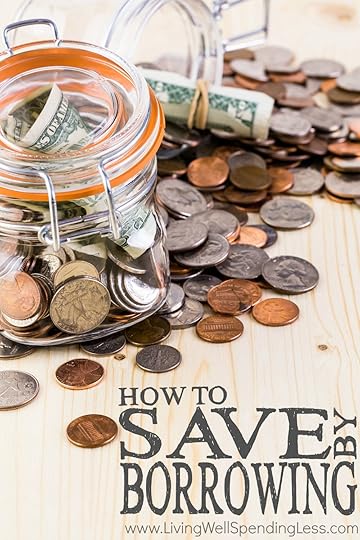
Pin It
The post How to Save by Borrowing appeared first on Living Well Spending Less®.
January 27, 2016
Big Easy Cajun Bean Soup

This is the time of year where there is nothing I crave more than a steaming bowl of hearty soup! But as much I crave comfort food, I don’t always have a lot of time to prepare it, which is exactly why it is SO important to have a good selection of quick & easy slow cooker soup recipes up my sleeve–just like today’s Big Easy Cajun Bean Soup.
With just a few budget-friendly easy ingredients, it comes together in minutes, then freezes beautifully until you’re ready to throw it in the crockpot, no pre-soaking, or thawing required. It couldn’t be any easier, and the New-Orleans inspired flavor was one of my family’s favorite recipes to-date.
Served with a side of rice or corn bread and your Mardi Gras menu is complete! Also, be sure to use the Ham-Beens brand beans, as they include a flavor packet that helps season your beans. They can be found at most major grocery stores!
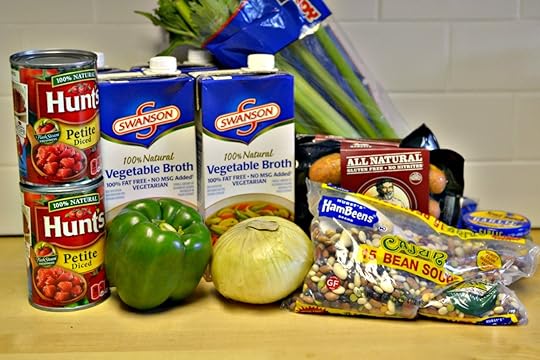
Here is what you need:
1 Package HamBeen® Cajun 15 Bean Soup
1 Green Bell Pepper
1 Sweet Onion
1 Bunch Celery
1 teaspoon minced garlic
8 cups vegetable or chicken stock
1 cup water
1 lb smoked sausage (optional; for cooking day only)
1 can diced tomatoes (optional; for cooking day only)
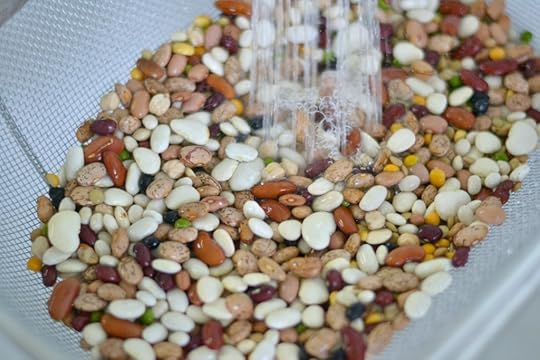
Step 1: Rinse and sort beans; check for unwanted debris & discard.
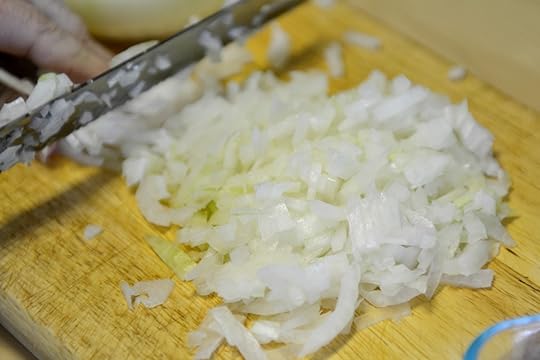
Step 2: Chop onion, green peppers, , and celery.

Step 3: In large bowl, mix together rinsed beans, green pepper, onion, garlic, celery, stock, water, and seasoning packet. Note: Do NOT add tomatoes at this time, as the acid in the tomatoes will prevent the beans from softening.
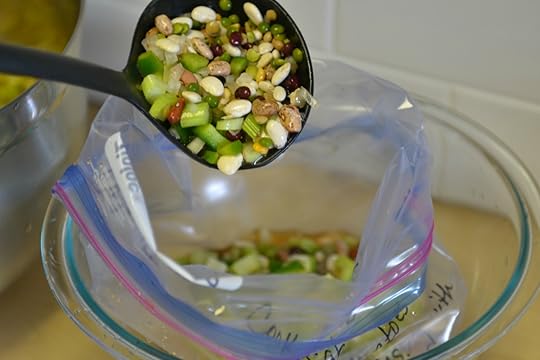
Step 4: Divide mixture into 2 1 gallon freezer bags (be sure to label bags first.)
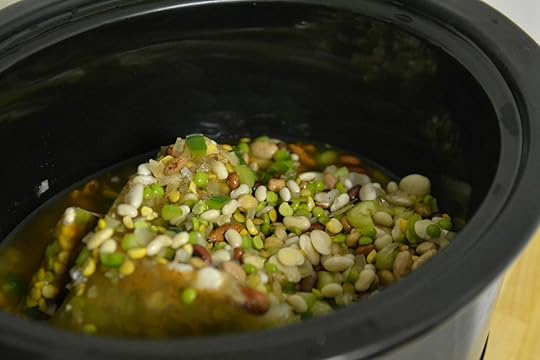
Step 5: On cooking day, place frozen soup directly into slow cooker. Set to high and cook for 5-6 hours.

Step 6:If desired, add tomatoes and sausage to soup, then cook for approximately 30-60 minutes more. Serve with a side of rice or cornbread.

Print This!
Recipe: Big Easy Cajun Bean Soup
Summary: This hearty soup is full of a ton of flavor and would be perfect for your game day menu!
Ingredients
1 Package HamBeen® Cajun 15 Bean Soup
1 Green Bell Pepper
1 Sweet Onion
1 Bunch Celery
1 teaspoon minced garlic
8 cups vegetable or chicken stock
1 cup water
1 lb smoked sausage (optional; for cooking day only)
1 can diced tomatoes (optional; for cooking day only)
Instructions
Rinse and sort beans; check for unwanted debris & discard.
Chop green peppers, onion, and celery.
In large bowl, mix together rinsed beans, green pepper, onion, garlic, celery, stock, water, and seasoning packet. Note: Do NOT add tomatoes at this time, as the acid in the tomatoes will prevent the beans from softening.
Divide mixture into 2 1 gallon freezer bags (be sure to label bags first.)
On cooking day, place frozen soup directly into slow cooker. Set to high and cook for 5-6 hours.
If desired, add tomatoes and sausage to soup, then cook for approximately 30-60 minutes more. Serve with a side of rice or cornbread.
Preparation time: 5-7 minutes
Cooking time: 5-6 hours in crockpot
Number of servings (yield): 8-10

* * *
This post was underwritten by Hurst Beans. All opinions are mine. Established in 1938, the N.K. Hurst Co. is a 4th generation family business based in Indianapolis, IN. Hurst’s HamBeens® are the nations #1 selling dry bean brand and can be found in grocery stores nationwide. For more info, please visit www.hurstbeans.com.

Pin It
The post Big Easy Cajun Bean Soup appeared first on Living Well Spending Less®.
January 25, 2016
15 Healthy Home Remedies
Home remedies can sometimes range from the super practical to the downright bizarre. I recently saw someone ask on Facebook if anyone had experience using a “mustard plaster” as a cure for a congested chest. Another person I know swears that duct tape cures a boatload of ailments, including warts.
The advantage of using home remedies is, of course, that they’re often low- to no-cost and they can quickly heal without a doctor appointment or an expensive trip to the pharmacy. They’re often more natural than other cures, as some rely on principals from Eastern medicine and others on tricks from grandma and grandpa. Plus, let’s admit it—they can be kind of fun and interesting (as long as you aren’t looking to home remedies as cure-alls and you’re seeking actual medical attention when necessary).
We’ve heard all these tips and tricks, and while some make sense, others can seem almost ridiculous or dangerous. So it got me thinking—which home remedies are tried and true, proven go-to answers? After a little research by my team, here’s what we’ve come up with.

1. Ginger for Nausea & Sore Throats
What it is: A spicy root used in cooking, ginger is available at most grocery stores, health food stores and Asian markets. It’s been used for thousands of years in Asian and Indian medicines.
How to use it: Try grating a teaspoon into warm water to create a tea to soothe sore throats. It also comes in a candied dried form, which you can use to soothe your stomach (or throat) as needed. You can also buy pickled, thinly sliced ginger, like you see at sushi restaurants. In restaurants, ginger is used as a digestif to end the meal and as a palate cleanser between courses. Use it the same way in your cooking or add it to spicy or citrus dishes.
2. Olives for Nausea
What it is: Believe it or not, an olive is actually a fruit. It’s edible and produces oil used in cooking and other applications. Olives are grown in the Mediterranean and they’re cured and fermented before they become edible.
How to use them: Simply eat a few olives to stave off feelings of nausea from morning or motion sickness. As we all unfortunately know, that awful watery-mouth feeling is usually a precursor to throwing up. Well, the tannins in olives dry up your saliva to ease that icky feeling. They also have a lot of “good fats” and vitamin E, so they’re a healthy addition to your diet. The green ones are less ripe than the black ones, and can have a milder, fruitier flavor.
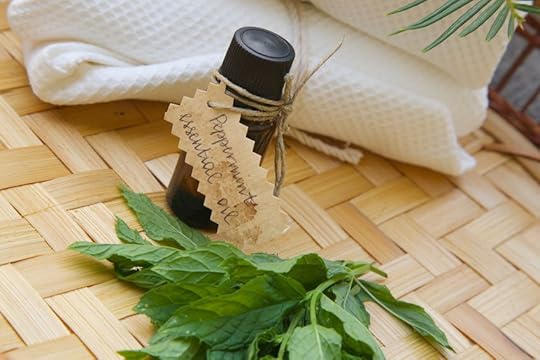
3. Peppermint for Headaches, Muscle Aches, Gas, Nausea, Sinuses and Stress
What it is: Peppermint is a natural herb. The leaves are dried for tea or used to extract essential oils. You can find peppermint as an essential oil, dried leaves, or used as a flavoring for candy and foods. It’s also used to scent many things and can be used in aromatherapy applications as well.
How to use it: I love peppermint. (Who doesn’t?) It does all sorts of wonderful things. Sipping peppermint tea or adding a few drops of oil to a glass of water can clear up nausea, gas and indigestion. (Hence, the popular after-dinner mint.) It’s a stress soother, and popping some peppermint (or cinnamon) gum can ease your anxiety and frustration when driving. The soothing, spicy scent can help clear congestion. Boiling a few drops in a pan of water can clear up a stuffed nose. It can also be added to lotion or shower gel to soothe muscle aches. The smell of peppermint is said to ease tension, which can cause migraines as well. Peppermint oil can have a soothing, cooling effect on itchy bug bites. This almost all-purpose miracle mint should be a welcome addition to anyone’s medicine cabinet. (Plus, it makes for great cookies—I’m looking at you, Thin Mints.)
4. Dandelion Tea for Bloating
What it is: We all think of dandelions as weeds, but they’re a surprisingly hearty and useful little plant. Their greens can be used in salads and as flavoring in root beer, plus they can even be used to make wine! While they’re definitely bitter, they contain loads of vitamin K and C—adding a boost of health and flavor to dishes all over the world. The leaves (and sometimes the flowers) are also dried for tea.
How to use it: Dandelion tea is used for many detoxifying and liver boosting purposes in herbal medicine. It’s a diuretic, so it’s often used to ease bloating and cramping. The tea can be a little bit tannic and bitter, so add a little honey to help it taste smoother.

5. Sugar for Hiccups
What it is: That sweet, delicious white stuff in your cupboard, which comes from plants (sugarcane and sugar beet). Sugar is a carbohydrate, and we’ve all heard a lot about health concerns surrounding our overuse of sugar—from diabetes and weight gain to the effects it can have on the brain and nervous system.
How to use it: In the case of hiccups, sugar is one of the fastest and most commonly used remedies. Literally: a spoonful of sugar is the cure. It works by stimulating your vagus nerve, causing your diaphragm spasms to stop (the cause of the hiccup in the first place). Frightening someone or getting them to hold their breath can also work, but it’s a less “sweet” solution.
6.Baking Soda for Bee Stings, Poison Ivy, Teeth Whitening, UTIs and Odors
What it is: Baking soda typically comes in that familiar little yellow and orange box. It’s a crystallized form of the alkaline chemical compound sodium bicarbonate. It can be used for a variety of applications from deodorizing to neutralizing acids to baking.
How to use it: For bee stings and poison ivy, make a paste from water and baking soda to soothe the burn of the sting, ease the redness and itchiness, and alleviate the soreness. For tooth whitening, try making yet more baking soda paste or even adding a little to your toothpaste. It can feel a little gritty, but it polishes your teeth and removes stains. Baking soda can be used to soothe (not cure) urinary tract infections until you can make it to the doctor. Dissolve a teaspoon of baking soda in a cup of water and drink to neutralize the acid in your urinary tract, soothing the urgency. The antibacterial properties of baking soda also help hold the infection at bay, but again, this isn’t a cure. You still need to get to the doctor as soon as possible. Lastly, baking soda is great at absorbing odors, which is why you put the box in the back of your fridge, sprinkle it on carpets and more. So if you have foot odor problems, sprinkle baking soda in your shoes to combat odor and keep things smelling and feeling fresh.

7. Apple Cider Vinegar for Diarrhea, Sore Throat, Stinky Feet and for Clear Skin
What it is: Made from fermented cider or juice, this acidic amber-colored liquid is a go-to for many applications. It’s used in baking, for pickling and preserving, and for adding flavor to dishes in the kitchen.
How to use It: Adding two tablespoons of apple cider vinegar to a glass of water can soothe stomach and colon linings while fighting off bacteria. Mix two tablespoons with water (and if you need to, add a little honey) and gargle to soothe a sore throat. Apple cider vinegar has probiotic properties, which can oust harmful bacteria. Because of that, it’s also helpful as a foot soak to combat smelly feet and as an astringent for oily or acne-prone skin. (Use a few drops on a cotton ball after washing your face.)
8. Cornstarch as Dry Shampoo
What it is: Cornstarch is a thickener made from corn kernels. It’s a dry powder used in baking, soups and sauces. It can also be used as shampoo!
How to use It: When combined with a little cocoa powder (for color) and essential oil, cornstarch shampoo can absorb excess oil and sweat, prolong your hairstyle and make your mornings much easier. The best part about this dry shampoo is it smells amazing! Try cinnamon oil for a Mexican hot-chocolate scent or orange oil for a yummy chocolate orange. This stuff’s easy to make and keeps for a long time.

9. Garlic for Colds, Flus and Sore Throats
What it is: We all know what garlic is—a strongly scented and flavored root used in almost every style of cooking. It’s easy to grow, inexpensive and easy to come by.
How to use it: Garlic has been touted as a miracle cure—a healthy remedy for many ailments from yeast infections to fatigue. With antifungal and antibiotic properties, this little root does have a lot of benefits, including boosting your immune system. When you’re sick, a hot bowl of chicken soup (with lots of garlic) just may clear your sinuses and speed along the healing process. It’s been well studied and proven to help give you a boost. If you can handle it, raw garlic actually works better, as cooking can dull the effects. Consider adding it to your salad dressing or after your dish is cooked to make it a little more effective.
10. Listerine® for Dandruff and Foot Fungus
What it is: This antiseptic mouthwash has been a go-to home remedy since 1879. It contains menthol and eucalyptol, as well as alcohol.
How to use it: Pour it over your hair after washing (dilute it 1:4 with water). The menthol can be soothing and cooling to your dry scalp and can help “break up” some of the flaking. For foot fungus, soak feet in a combination of 1:1 Listerine® and white vinegar for 30 minutes a day and your yellow and cracked toenails should show vast improvement.
11. Witch Hazel and Essential Oils as Bug Spray
What it is: Witch hazel is an astringent liquid made from the bark and leaves of a witch hazel plant. You can buy it near the toner and face wash and it makes a great cleanser. The astringent property of the witch hazel repels insects.
How to use it: Combine witch hazel and essential oils with distilled water and keep in a spray bottle. Citronella oil can be offensive to bugs. Baby oil is optional in this recipe, but it does add a skin-softening quality to the spray. Is it as effective as DEET-laden chemical sprays? Sadly, no, but you can feel better about spraying your children with it, and it’ll help keep the bugs at bay.

12. Essential Oils for…All Kinds of Things
What it is: Distilled and concentrated oil made from a variety of herbs. Generally they carry the same properties as the plant they’re taken from, but in a higher and more pure form. We use Young Living Essential Oils for a variety of things.
How to use them: Add a few drops of essential oil to a carrier oil (such as coconut) and apply topically. They can also be diluted in a spray, diffused for aromatherapy, added to cotton balls and put in the vacuum, rubbed on air vents, added to your humidifier and used dozens of other ways. They can also be taken orally as a dietary supplement as well (but only use 100% pure oils).
Here are just a few to try:
Tea Tree: Mouth sores, acne, antiseptic for cuts, disinfectant for cleaning
Eucalyptus: Energizing, promotes alertness, cleanser, helps with muscle pulls and aches
Lavender: Calming, relaxing, soothes skin—good for rashes and cuticles, helps dry skin and beneficial for sleep
Geranium: Repels bugs, can have anti-anxiety and soothing effects
Cinnamon: Eases stress, aids in alertness, helps support theimmune system and circulation
Clove: Mouth sores and dental issues—oral surgeons even use oil of clove for packing wisdom teeth sockets—can also repel bugs and moths
Lemon: Elevates mood, is cleansing, great for household uses and for soothing digestive issues.
13. Coconut Oil for Hair & Skin
What it is: A fatty oil taken from the flesh of the coconut. It’s a little thinner than solid vegetable oil and a little thicker than olive oil. It has a wide variety of uses and it’s the favored internet cure-all sensation for the past few years. (Just don’t believe everything you read!)
How to use it: While it may not do everything the internet claims, we do know coconut oil makes a great moisturizer and smooths fly-aways, plus it can be used in cooking. It’s wonderful for moisturizing your elbows and lips, and it’s a gentle and effective makeup remover.
14. Duct Tape for Warts
What it is: The go-to adhesive for most household chores. Kids love it because it makes strong fabric and you can use it for lots of projects. Adults love it because it will literally fix anything you need to stick together.
How to use it: To remove warts. (For real!) Cut a small piece of duct tape to the size of your wart, cover, and let set until it falls off. Soak the wart, then cover again. Continue the process until the wart goes away. It’s hard to say how it works (it may work by simply keeping the wart covered) and the science behind this one’s still out, but you can find lots of evidence that this actually works…but perhaps not for everyone.

15. Aloe Vera for Burns, Cuts and Scrapes
What it is: This little succulent plant is pretty easy to grow, even if you aren’t a plant person. It needs minimal care and it flourishes by a window. In warm climates it can be put outside over the summer and brought into the house in the wintertime.
How to use it: Break or cut off one of the spiky broad leaves and squeeze out the “goo” from inside. Use the gel to cover a burn, cut, or other area needing soothing. Aloe is used as an ingredient in many skincare products and it’s safe for use by most people. It’s just one of those plants every house should have!
* * *
What are YOUR favorite go-to home remedies? It seems every family and household has their own, from sleeping with a bar of soap to cure leg cramps to drinking pickle juice to cure a hangover. As in all cases, if you suspect a serious medical concern, always visit a professional, but there are many solutions to healthy living right from your cupboards at home!

Pin It
The post 15 Healthy Home Remedies appeared first on Living Well Spending Less®.
January 22, 2016
How to Start Paying Off Debt
I am always happy to welcome back my friend Cherie Lowe from the Queen of Free, who has graciously joined us here at LWSL as a regular monthly contributor. Cherie is the author of the amazing book, Slaying the Debt Dragon, which she wrote after paying off more than $127,000 in debt! As always, I am so excited to have her bringing her wealth of knowledge & experience on this subject to LWSL–please join me in making her feel right at home!
* * *
This is a Guest Post from Cherie at Queen of Free

I love a new jigsaw puzzle, fresh out of the box – the more pieces, the better. Try not to get too excited about my wild and crazy addictions. But there’s just something about putting together a mystery. Even though the beautiful picture on the box provides a guide, there’s still so much work to be done. There are straight edges to sort, corners to discover, and the beginnings of pairing two and three small matches together to build a fragment of the image.
At times, I get frustrated and need to walk away. I can lose hours in the realm of the big picture or even just a section of the overall view. The task is never easy; however, the satisfaction of fitting the last little cardboard backed, glossy photo, oddly shaped piece is so gratifying. I’ll be honest that I’ve never attempted putting together a puzzle without the front of the box though. I’m not sure I’ve got the skills to pull it off.
Every great journey requires a roadmap. Every architectural feat necessitates a plan. And for me, every 1000 piece jigsaw demands a source picture to guide my process. Paying off debt is no different. If you want to defeat debt this year, you need a step-by-step plan.
No one wakes up one morning and *poof* their debt dissolves into thin air. Every success story I’ve ever read included intentionality, hard work, and a plan. If you have no clue as to where to even begin, these three steps will kick start your journey.

Step 1: Get to the Heart of the Matter
While difficult to hear, very few of us get into overwhelming debt without owning a part of the process. There are extreme cases of medical debt or business dealings gone south, but many of us simply spent more than we made or borrowed money without having a long-term plan.
If you don’t identify the emotions behind your money problems, no plan or strategy will yield any amount of sustained success. My faith compels me to believe that debt is often spiritual and requires us to seek forgiveness.
I know that both a lack of trust and impatience caused us to borrow. A discontent with what we had drove me to buy even when we didn’t necessarily need things. And then plain laziness caused us to overspend, too.
If you don’t deal with the heart issues you might have when it comes to racking up debt, no program will ever keep you out of debt. You may have some success but without inner transformation, your finances will return to the same state again in just a matter of time.

Step 2: Money In, Money Out, Money Owed
Before we paid off $127K in debt, the world budget struck terror in my soul. Unfortunately, I believed that budgets were beyond my grasp, too complicated to manage and of course way too much work. And then there was the faulty belief that budgets = no fun.
Here’s the thing, budgeting may never be your buddy; it can be a saving grace. And if you want to pay off all of your debt, you need to develop a budget – STAT.
It’s definitely not a complex process. If you need to, you can even change your lens on budgeting by renaming it. We call it forecasting in our house.
To begin evaluating process, begin with this simple equation:
Money In (how much do you make?) MINUS Money Out (how much are you spending) EQUALS Your Budget. You can work on adjusting how much you are spending once you see the bigger picture. But for now, simply focus on how much money is coming in and how much money is going out.
Next, you’ll need to tally Money Owed (your total debt load). This might be a terrifying step for some. But it is essential if you want to begin to live beyond minimum payments. You have to know exactly how much money you own to whom. You could build a spreadsheet and include the interest rates or you could simply jot down the amount totals and monthly payment amounts on a legal pad (this is what we did at the beginning of our journey).
Need a little help getting organized? Check out these FREE Printable Budget forms.
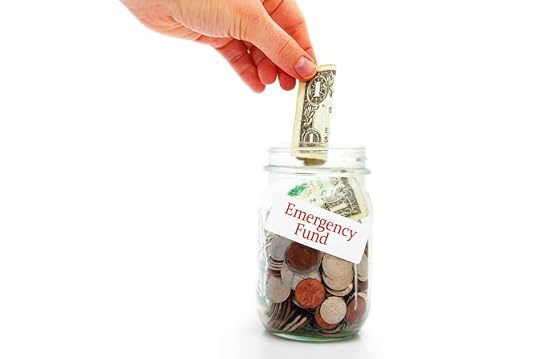
Step 3: Build An Emergency Fund
It’s never a question of if an emergency is going to happen, but when. In order to have the leverage you need to pay off debt, you need to set some money aside for potential crises. As a rule of thumb, I encourage people beginning their debt slaying journeys to set aside $1000-2000 in cash. It might seem like a lot; however, major car and household appliances usually clock in between those price points.
If you’re already feeling strapped, this task can feel daunting. I mean after all, no one just has an extra grand sitting around the house. Begin by evaluating if you have anything you can sell. No, you may not own a yacht or diamond mine, but one person’s clutter truly is another’s treasure. From fitness equipment to toys, from books to clothes, you can quickly build reserves will also lightening your own load. Whether you choose to have a physical yard sale or post your items on your social media channels or join a “Garage Sale” group on Facebook, be about the business of making as much money as you can, as quickly as you can.
Dig for coins in the couch, sell old gold jewelry, and perhaps even take on another job to build that emergency fund as quickly as possible. When you begin paying off debt, a roadblock will quickly appear. This emergency fund isn’t in place to buy a cute new pair of shoes. It’s there for catastrophic expenses and bump in the road hiccups.
Don’t try to put together the puzzle without a guiding image. Begin taking your first steps toward paying off debt by checking out resources on Living Well Spending Less. Check out the podcast of our interview on Focus on the Family or my book Slaying the Debt Dragon: How One Family Conquered Their Money Monster and Found an Inspired Happily Ever After for a more detailed plan to defeat your debt.
In the end, the finished puzzle is well worth the effort. This is your year to transform your finances from a broken mess to a piece of art.
Cherie Lowe is an author, speaker and hope bringer.
Her book Slaying the Debt Dragon details her family’s quest to eliminate over $127K in debt in just under four years. As her alter ego the Queen of Free, Cherie provides offbeat money saving tips and debt slaying inspiration on a daily basis.
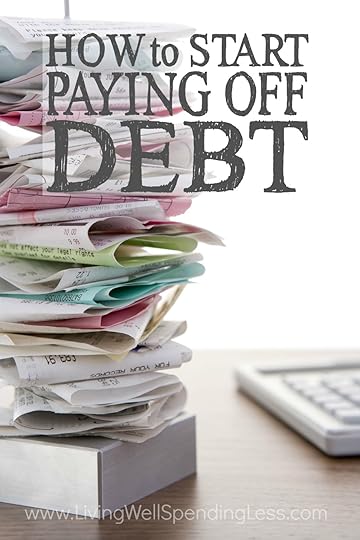
Pin It
The post How to Start Paying Off Debt appeared first on Living Well Spending Less®.
January 20, 2016
Creamy Ranch Chicken

It’s no secret that we LOVE quick & easy freezer meals around here, especially ones that use budget-friendly chicken! Believe it or not, this tender, juicy, flavor-packed Creamy Ranch Chicken might just be our easiest recipe yet. It’s got just 5 basic ingredients, whips up in minutes, then goes straight from the freezer to the crockpot to the table, all while tasting like you spent hours slaving away in the kitchen!
To make it as part of a freezer cooking day, just split the sauce & chicken into multiple bags, then throw it right into the freezer–no cooking required!
You can use any type of chicken but my family much prefers the boneless, skinless chicken thighs, which are a darker, juicier meat and also tend to be cheaper than the boneless skinless breasts.
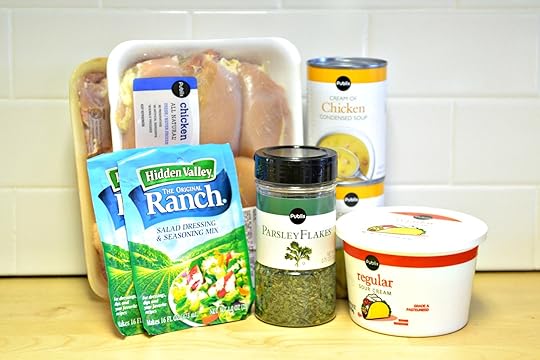
Here is what you need:
2 pounds boneless skinless chicken breasts or thighs
2 cans cream of chicken soup
2 packets ranch dressing
1 16oz container sour cream
2 tsp dried parsley
salt & pepper
baby carrots (optional; cooking day only)
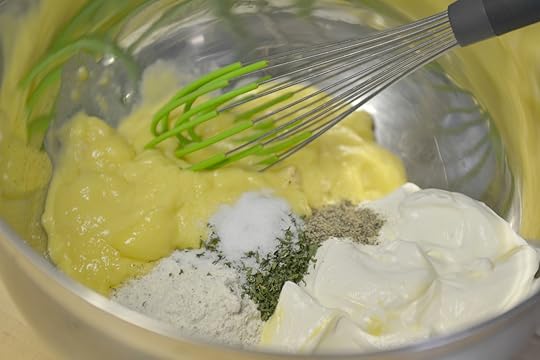
Step 1: Whisk together soup, ranch packets, sour cream, parsley, & salt & pepper to taste.
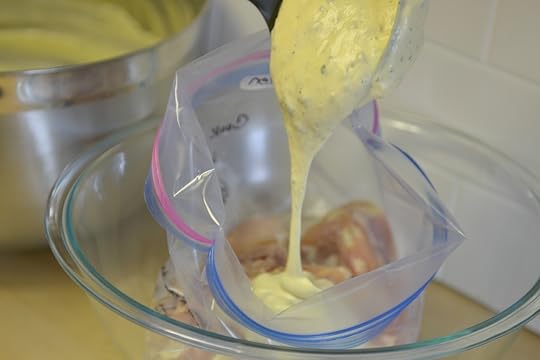
Step 2: Divide chicken into 2 gallon size freezer bags (be sure to label bags first!) Then divide soup mixture into bags over chicken; freeze until needed.

Step 4: On cooking day, place frozen chicken directly into crockpot. Cook on high 5-6 hours, or on low 7-8 hours.

Step 5: Optional! If desired, add carrots to crockpot with about 2-3 hours of cooking time left and serve over rice.

Print This!
Recipe: Creamy Ranch Chicken
Summary: This super simple chicken recipe cooks in the crockpot for a delicious meal with little to no cleanup!
Ingredients
2 pounds boneless skinless chicken breasts or thighs
2 cans cream of chicken soup
2 packets ranch dressing
1 16oz container sour cream
2 tsp dried parsley
salt & pepper
1 small bag baby carrots (optional; cooking day only)
Instructions
Whisk together soup, ranch packets, sour cream, parsley, & salt & pepper to taste.
Divide chicken into 2 gallon size freezer bags (be sure to label bags first!) Then divide soup mixture into bags over chicken; freeze until needed.
On cooking day, place frozen chicken directly into crockpot. Cook on high 5-6 hours, or on low 7-8 hours.
Optional! If desired, add carrots to crockpot with about 2-3 hours of cooking time left and serve over rice.
Preparation time: 5-7 minutes
Cooking time: 5-6 hours on high or 7-8 hours on low in crockpot.
Number of servings (yield): 4

Pin It
The post Creamy Ranch Chicken appeared first on Living Well Spending Less®.
January 18, 2016
How to Maximize Your Tax Refund
Taxes. Just the word brings a little shudder for most of us (at least it does for me!) We’ve all heard it: in life there are only two certainties, and, as Benjamin Franklin said, they’re death and taxes. Yikes!
But while most of us dread tax time, we’re also all hoping to make the most of our tax refund. It’s almost like a bonus when you get back something unexpected. If you’re so lucky to get a return, be sure you use your return wisely, so money continues to work for you.
The question at tax time is always: did I do enough to ensure I get something back or at least to ensure I don’t owe and arm and a leg? Use these smart strategies throughout the year to help you maximize your refund. Even if you didn’t prepare for this year’s taxes, there are some things you can do at tax time to ensure you’re getting as much of a refund as possible.

Use a Professional
Some of us really like to DIY…even when it comes to our taxes. There are some smart software programs out there, like TurboTax and TaxAct that make it so simple it almost seems silly to pay a professional. As Dave Ramsey puts it, “If you’re young, single and don’t own a home” and if you’re very comfortable with forms, then maybe going the route of tax software is the right choice for you.
However, keep in mind, tax professionals are paid to KNOW this stuff. They understand the ever-changing nuances of tax law, deductions and withholdings, and they also know the right questions to ask. Tax software might be easy to fill out, but you may not realize there are deductions out there you could be taking advantage of. Going with itemized (individual) deductions rather than simply taking the standard deduction can help you save, as there are many deductions you might not know about that your tax preparer can help you find. In the end, hiring a tax professional is usually worth it: for a few hundred dollars or less, you can save thousands.
Always use a professional who’s been vetted and reviewed. Search for an Endorsed Local Provider if you’re unsure how to find someone reliable and ethical. When trusting someone with your money, always lean on the safe side. I should also add the caveat: ALL of these ideas to maximize your tax return should be reviewed and carried out under the watchful eye of a professional.
Increase Your Withholding
If you don’t own your own business, chances are you’ve filled out a W-4 form when you set up your payroll. Did you know those forms should be reviewed each year? Many times employees don’t think to update their withholding status as their lives change. You may have another child, your spouse may change their employment or your marital status may change. All of these factors can affect your exemptions.
In general, the fewer exemptions you claim, the larger the amount withheld from your paycheck will be. This money is paid toward your taxes and the balance at the end of the year determines your refund or the amount you owe the IRS. For a larger refund, you want to have more withheld (and thus should claim fewer exemptions).

Track Your Charitable Contributions
If you do itemized deductions rather than standardized deductions, you may be able to deduct several additional items (thus saving you more and maxing that refund). You can deduct your charitable contributions (in some cases up to 50% of your taxable income)! Donations under $250 just require a receipt to claim. If you donate between $250 and $500, you’ll need written documentation. Donations over $5000 require more detailed records.
You can also deduct expenses you may incur while doing volunteer work. Any tithing can be deducted as well as donations to churches, schools and 501(c)(3) organizations, which includes most non-profits and charities. The IRS has guidelines available on which organizations qualify as charitable entities.
Keep Track of Job Search Costs
If you’re changing employers or searching for a job, you may be able to use any costs you accrue as a deduction. This might include things like the cost of a job placement service or sending out your resume. Keep in mind: you must be searching within your current line of work. (The IRS won’t let you deduct expenses of changing your career from a nurse to a pastry chef.)
Review Your Filing Status
In most cases, you’ll save the most if you’re married by filing jointly, rather than separately. This might not be the case, however, if your spouse has defaulted student loan debt, alimony, child support, healthcare expenses or other variables. Consult with your ELP to see if you’re using the smartest status for your circumstances. If you’re single, you may be able to save by filing as head of your household.

Pay Attention to Any Family Obligations
When my husband’s mother was living with us, we were given the opportunity to be her caregivers at a time when she needed us so badly. Our daughter was just a baby at the time and while it was a learning experience and a blessing, it also opened my eyes to the financial and emotional strain caregivers can experience. Realizing many Americans are facing these same “sandwich years” with elderly parents and small children living in one home, the IRS gives deductions for caring for disabled or retired adult members in the household.
The IRS gives consideration for other familial obligations as well, including up to 35% of daycare costs, if the parent requires childcare to meet the guidelines of their employment (and falls within income regulations). There are also considerations given for alimony payments and other expenses. Of course, you also receive a tax credit for each child you have in your home under the age of 17.
If you have college-age dependants, you may qualify for the American Opportunity Tax Credit which offers a credit to students and parents to help offset college and educational expenses.
Track Your Professional Expenses
If you use itemized deductions, you should track any expenses that are part of your day-to-day job, which your employer doesn’t reimburse. This can be include your cellphone, laptop, and other equipment you may have purchased on your own, but need to do your job.
You can also deduct expenses related to business meals and travel (unfortunately, not your commute, though). If you’ve joined a professional organization or if you receive subscriptions to professional journals, you can also deduct those costs, especially if you use them to stay current on your industry. You can also deduct the cost of any uniforms you might need exclusively for work.

Track Your Small Business Expenses
If you run a small business, a blog, or freelance or consult from your home, you may be able to deduct many of the expenses associated with your small business or consultancy. Even if you have a “day job” and make a little side money from home, you should still look into deducting your expenses.
Small business expenses might include your internet and phone service you use to run your business. Technology and computer equipment, as well as office supplies, are all part of making a business run from home, so save all those receipts and records! You may even be able to save on a percentage of your mortgage or rental payment based on the square footage of your home office if you use that space only to conduct your work. You may also be able to save on the same percentage of your utilities, which can certainly add up over the year.
Contribute as Much As Possible to Your IRA
If you’re investing for retirement, you may be able to make your investment work for you NOW. If your IRA isn’t covered at work, you can lower your taxable income (and thus the taxes owed) by contributing to your pre-tax IRA. The IRA contribution comes right out of your gross income (rather than your post-tax net) and by contributing the maximum amount, you’re lowering your total amount taxed. Check for the maximum contribution on the Saver’s Credit (love that name!) and use it to your advantage!

Pay Your Mortgage Wisely
You can maximize your refund by paying your January mortgage payment and property taxes in December, rather than waiting until after the first of the year. If you’ve refinanced your home within the last year, you’ll also have a greater deductable portion because your interest payments will have increased. At the beginning of your mortgage payments, you’re paying a greater amount toward interest. By refinancing, you’re essentially hitting “reset” on the mortgage process so you’ll have a greater deduction on the interest.
Be Energy Efficient
There are certain deductions for making energy-efficient upgrades and updates to your home. Coincidentally, many of the energy efficient upgrades are also going to help you save on your utilities! Things like new roofing, insulation, adding solar panels, and other home improvements may qualify for deductions. If you drive a hybrid vehicle, you may also qualify for energy-efficient deductions and credits.

Take Care of Yourself
It may sound strange, but by caring for yourself and using smart budget strategies, you can also save on your taxes. Simply being budget savvy and aware of your finances helps you see things coming down the road and prepare for financial strains (like saving money for taxes if you think you’ll end up owing rather than getting a refund). It also means you’ll be organized and you can easily access receipts and records you need to have on hand.
While your health insurance costs usually aren’t part of your IRS deductions (unless you run your own business, then they ARE), other health related expenses can be used as deductions. If your family has faced an accident or major health issue not fully covered by insurance, it’s worth it to consult with a professional. Putting off healthcare and preventative screenings may seem like a way to save, but many of these are covered by your HSA, pre-tax—so take advantage!
Lastly, if you’re thinking about going back to graduate school, you may qualify for the Lifetime Learning Credit. This can also help you offset the costs of your college student’s education if they’ve gone beyond their four years of qualifying for the American Opportunity Credit.
* * *
Taxes and debt shouldn’t hold you back from your goals and dreams. As you get organized and learn to prioritize and save, pretty soon tax season won’t seem quite as dreaded—and you may actually find you’re looking forward to seeing that refund add up!
Pin It
The post How to Maximize Your Tax Refund appeared first on Living Well Spending Less®.
January 15, 2016
5 Big Benefits of Living in a Small House

This is a guest post from Rosemarie Groner of The Busy Budgeter
I’ve moved 11 times as an adult. I’ve lived in 300 square foot basement apartments, 900 square foot townhomes, 3,000 square foot large homes and pretty much everything in between. In all those moves, one thing has been constant. The large homes may be impressive to look at, but the smaller homes are always my favorite to live in.
If you feel stuck in your small house, I want you to think about the benefits that the smaller house brings to your family. There are so many benefits to small house living that are hard to appreciate until you’ve moved out. These are my top 5 benefits of living in a small house.

A smaller house saves you money
Because a smaller home typically costs less, this frees up money every month to spend on things that you really want. It’s not just the lower mortgage payment that will save you money, though. There’s about a $200/month difference for our electric bill from our 900 square foot home to our 3000 square foot home. That adds up to major savings over the years that you’ll spend in your home.
Just as important as having extra money to spend every month, is knowing that you’re living below your means. Living below your means gives you peace of mind if you have a major financial setback like being unable to work, losing a job, or having a serious medical problem.

A smaller house is easy to clean
Cleaning 900 square feet is obviously less work than 3000 square feet. Let me tell you, “cleaning the house” in my 300 square foot basement apartment took about 7 minutes. Cleaning the house in my 900 square foot townhouse took about 2 hours. Cleaning the house in my 3000 square foot home took about 5 hours.
When you’re cleaning your house every week, that’s a pretty significant time savings. Have you ever carried a large vacuum up and down 3 flights of stairs? It’s not fun. Your only other choice is to buy a vacuum for every level of your house… or never vacuum.
A large house encourages you to have more “stuff” in it, which is more “stuff” that needs to be cleaned and cared for. We filled the 3000 square foot home to the brim with stuff we thought we needed. When we lived in the smaller houses, we thought about where we would put things before we bought them and walked away from a purchase if we didn’t know.

A smaller house can help build relationships.
There are plenty of families that grew up in mansions that are extremely close, but I truly believe that my upbringing in a small house (1000 square feet) brought my family closer together. When you live in a small space together, you learn to work around each other and diffuse problems before they happen.
We jokingly say “There’s nowhere to run to” in our house and it’s a true statement. It’s really hard to avoid people in a small home. You learn to work around your differences and mediate problems as they come up.
In the 3,000 square foot house, it was common for my husband to play Xbox downstairs and me to watch movies or fold laundry upstairs. In the small house… Everyone spends time in the living room, because that’s the only option. It makes us closer to each other since we spend more time together. We choose activities that would involve everyone like game nights and popcorn parties instead of individual activities (like Fallout and Reality TV).
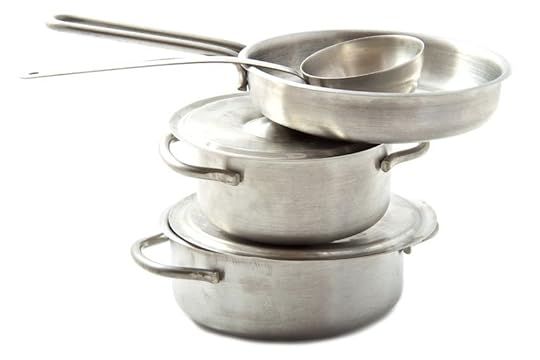
A smaller house encourages you to live more simply
Because you have less space, you’ll choose wisely what deserves a spot in it. I promise you that you don’t really need everything we buy to fill up that 3000 square foot home. And you’ll likely be happier without it. Think about the things that you use every single day. Now add in a few hobbies that you do frequently. Those are the things you need to have space for in your home.
Our great-great-grandmothers had a pot and a pan. We have 13 different types of pots, pans, steamers, fryers, griddles, slow cookers, rice cookers, woks, fondue pots, you name it. And yet, they made every single meal from scratch while I still struggle with avoiding the drive-thru. I find more and more that the less things I have, the happier I am.

A smaller house is easier to customize
When you live in a 3,000 square foot home with vaulted ceilings, two living rooms, and four bedrooms it can be really expensive to furnish. It can be even more expensive to decorate! Without a large amount of expendable income, it’s hard to create the warm and inviting home you dream of.
When you live in a smaller house though, having your space set up and decorated exactly how you want it is pretty easy! You can paint yourself, and start small grabbing quality items that are made to last and upgrading things slowly over time. After some time, you’ll have a magazine worthy house that you’ll be proud of at the fraction of the cost of a larger home.
My 700 square foot apartment was gorgeous and I was so proud to have friends over for dinner. My 900 square foot townhouse was beautifully decorated and personalized. It felt like a home as soon as you walked in. My 3,000 square foot house felt really impersonal. There was a lot of white walls and it had a “bare bones” feel to it. It felt like a large house, and not a cozy home.
While I certainly think that having a large cozy home is possible, I want you to realize that there are so many blessings in your small home that you might overlook while you’re wishing that you had a larger home. Because I’m over here, wishing that I had your smaller home.
At the end of the day, it’s not the size of your house, but what you fill it with. You can be happy in an apartment or you can be happy in a mansion. The house won’t create your happiness, it supports it.
Rosemarie Groner is a formerly stressed, overworked and exhausted momwho loves blogging almost as much as she loves brownies. She writes at The Busy Budgeter about how she used the free Ultimate Money Saving Workbook to reduce their spending enough to be able to quit her job, stay home with her kids and then found way to make up her salary at home. She’s still working on the cure for exhaustion.

Pin It
The post 5 Big Benefits of Living in a Small House appeared first on Living Well Spending Less®.
January 13, 2016
5 Ingredient Pot Roast
This may sound a little odd coming from a vegetarian, but pot roast is hands down my favorite meal to make! Not only is it ridiculously easy and completely foolproof, not to mention a one-pot slow cooker meal that you can set and forget, but it always gets RAVE reviews. As in not just “oh this is yummy” good but “oh my gosh this is the best thing I’ve ever tasted” good. It is a great way to feed a crowd without much effort, and although it takes just a few minutes of hands-on time and makes the perfect weeknight meal, it also tastes special enough to serve for a holiday meal or Sunday dinner.
To make it as part of a freezer cooking day, just split the marinade & beef into multiple bags, then throw it right into the freezer–no cooking required! Making it ahead of time is not necessary, though, as it is equally delicious made the same day.
Here is what you need:
2 sweet onions
10 whole cloves of garlic, peeled
4 cups beef broth
4 cups red wine( or extra beef broth, if you don’t want to use wine)
2 3-4 lb chuck roast
salt & pepper to taste (optional)
carrots & potatoes (optional: for cooking day only)
Step 1: Peel onions and quarter into wedges.
Step 2: Whisk together broth & wine; add salt & pepper to taste (I added about ½ teaspoon of pepper & a teaspoon of salt).
Step 3: Divide chuck roasts into 2 gallon freezer size bags. (Be sure to label bags first!) Divide onion and garlic into two bags with chuck roast, then divide broth mixture over meat. Press air from bag, seal, & freeze.
Step 4: On cooking day, place frozen roast directly into crockpot. Cook on high 6-7 hours, or on low 8-9 hours. If desired, add carrots and potatoes to crockpot with about 2-3 hours of cooking time left for a full one pot meal.
Print This!
Recipe: 5 Ingredient Pot Roast
Summary: This hearty meal is so easy and full of flavor. It is sure to be a new family favorite.
Ingredients
2 sweet onions
10 whole cloves of garlic, peeled
4 cups beef broth
4 cups red wine( or extra beef broth, if you don’t want to use wine)
2 3-4 lb chuck roast
salt & pepper to taste (optional)
carrots & potatoes (optional: for cooking day only)
Instructions
Peel onions and quarter into wedges.
Whisk together broth & wine; add salt & pepper to taste (I added about ½ teaspoon of pepper & a teaspoon of salt).
Divide chuck roasts into 2 gallon freezer size bags. Be sure to label bags first..
Divide onion and garlic into two bags with chuck roast.
On cooking day, place frozen roast directly into crockpot. Cook on high 6-7 hours, or on low 8-9 hours.
Optional! If desired, add carrots and potatoes to crockpot with about 2-3 hours of cooking time left for a full one pot meal.
Preparation time: 5-7 minutes
Cooking time: 6-7 hours on high or 8-9 hours on low in crockpot.
Number of servings (yield): 6-8
The post 5 Ingredient Pot Roast appeared first on Living Well Spending Less®.
January 11, 2016
Batch Cooking 101

This is a guest post from Alea Milham of Premeditated Leftovers
It seems like every other month a new study comes out that supports the idea that eating dinner as a family has long term benefits for children. I agree that having that time to come together is not only good for the kids, but for the entire family, but I can’t be the only person who has wondered if eating together as a family is still beneficial if you are stressed out and scolding children to clear the table while trying to prepare a healthy meal.
Oh, the mama guilt! We are trying to balance so many things: creating healthy meals for our family, carving out quality time together, homework, after school activities, and church meetings. When something has to give, all too often it is the home-cooked, family meals.
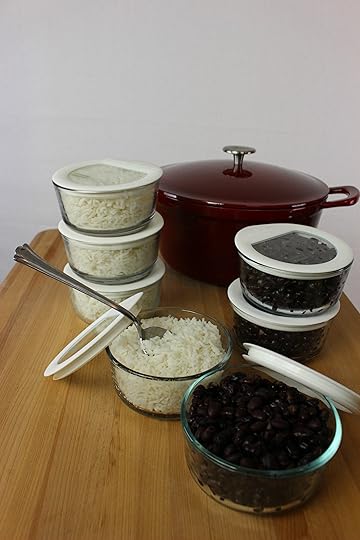
Simplify Dinner Time with Batch Cooking
I realized that instead of turning to packaged foods on those hectic nights, I could create my own “convenience foods” by batch cooking staples such as meats, beans, and rice ahead of time. It takes the same amount of time to cook 3 cups of rice as it does 1 cup of rice. By spending 1 – 2 hours a week batch cooking ingredients, I can save time and streamline dinner preparation. Cooking the most time consuming ingredients in bulk enables me to create quick and easy dinners with minimal prep time on busy weeknights.
In addition to batch cooking staples, I prep my vegetables ahead of time. Just prepping vegetables can shave off 10 – 15 minutes of prep time on busy nights.
I also make a large salad that we can use through out the week. The salad can be used as a base for a fast and easy dinner or as a simple side dish. I add shredded lettuce, matchstick carrots, and cherry tomatoes to a large lidded bowl. I place a paper towel in the bowl to absorb any moisture which helps keep the greens from wilting.
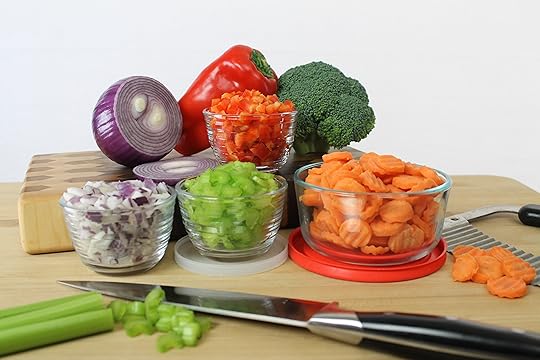
How to Get Started with Batch Cooking
Create a menu plan.
Make a List of your family’s favorite recipes. Look at the recipes to identify common ingredients. Do several call for chicken or ground beef? Do a couple include rice or beans? Do most of them include onions or cheese? Start by choosing 5 – 6 recipes that share some common ingredients and make your shopping list.
Choose a batch cooking day.
Don’t worry, you don’t need an entire day; in most cases you only need 1 – 2 hours to do your batch cooking. However you want to pick a day where you have an hour or two to devote to batch cooking your staples and prepping your vegetables. I like to do this on the day I do my grocery shopping. I usually dive in as soon as I walk in the door rather than putting away the groceries and then pulling them back out later to cook them.
If you choose to batch cook an ingredient in the slow cooker it will take longer, but it is a hands off process. You only need to spend 5 – 10 minutes setting it up and then another 10 – 15 minutes storing the slow cooked food.
Choose your batch cooking methods.
I like to choose the fastest methods possible and maximize my cooking time by using multiple appliances to cook the most food in the least amount of time. However, I also capitalize on times when the oven is already going to be on. If I am roasting a chicken for Sunday dinner, it isn’t that much extra work to pop an extra chicken in and cook two at the same time.

Sample One Hour Batch Cooking Method
I start by putting the item that takes the longest to cook on first, then the next longest cooking item, so on until everything is cooking. Once all of the food is cooking, I start prepping vegetables while waiting for the items to cook. I occasionally have to pause prepping vegetables to tend to the items that are cooking, but I can finish up whatever needs to be done while waiting for the items to cool.
Cook 1 pound of black beans in a pressure cooker. Cooking time 25 minutes
Cook 3 cups of basmati rice on the stove top. Cooking time: 20 minutes
Broil 2 – 3 pounds of chicken thighs. Cooking time: 12 minutes
Brown 2 pounds of ground beef. Cooking time: 10 minutes
Chop, slice, and dice vegetables. Prep Time: 20 minutes
Grate 1 pound of cheese. Prep Time: 5 minutes
While broiling is the fastest ways to batch cook chicken breasts and thighs, if you need shredded chicken for a recipe, you will probably want to cook it in a slow cooker or a pressure cooker. If I am going to be using a slow cooker for part of my batch cooking, I try to time it so that the item will be done cooking close to the same time as the other batch cooked items. This allows me to do all of my food storage and clean up at the same time.

Store your cooked food in usable portions.
Look at your recipes and determine how much you will need of each of your pre-cooked ingredients and place that amount in a sealable container and refrigerate it. While it might seem easier to place it all in one large bowl, if you pre-measure it and store the amount for each recipe in individual containers, you can just grab it and add it to your recipe. This will save time measuring ingredients when rushed.
If you cooked more than you can use in the recipes that you have planned for the next week, freeze the excess in usable portions. Before freezing cooked food allow it to cool. This will prevent condensation from forming inside your container so fewer ice crystals will form on your food. If using freezer bags, remove as much air from your container, because air causes freezer burn. If you are freezing food in lidded containers, place a piece of parchment paper or plastic wrap on top of the food before you put the lid on it to reduce the amount of air that comes in contact with your food. Don’t forget to label your food before you place it in the freezer.
Create quick dinners with your pre-cooked ingredients.
Use recipes that call for precooked meat, rice, and beans or modify your recipes. Many modern recipes call for pre-cooked items, but if your recipes do not you can modify your recipe. Either eliminate the step that calls for the ingredient to be cooked and add the pre-cooked ingredient in at that point or add your pre-cooked item in at the very end and just cook it until it is heated through.
Quick and Easy Recipe Ideas Using Batch Cooked Ingredients
Stir-Fry
Tacos
Rice Bowls
Chicken Salad
Taco Salad
Soups
Frittatas
When all else fails, make Quesadillas! You can put anything in between two tortillas as long as you add enough cheese to hold them together.
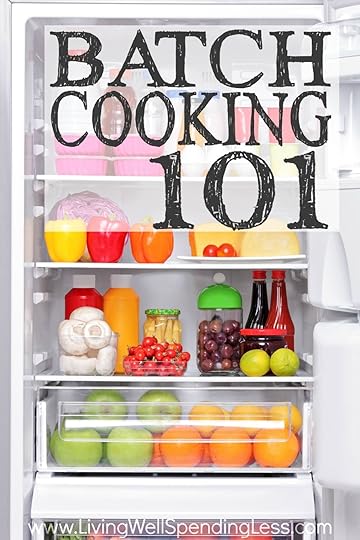
Alea Milham is the founder of Premeditated Leftovers and the author
of Prep-Ahead Meals from Scratch. She aims to help busy parents create inexpensive, wholesome meals by sharing simple recipes made with whole foods, practical shopping tips, time saving techniques, and meal planning strategies.
The post Batch Cooking 101 appeared first on Living Well Spending Less®.
January 8, 2016
48 Life Skills Everyone Should Learn
In theory most of us know we should be prepared for anything, but in reality we can all sometimes feel woefully unequipped to handle all the curveballs life throws our way. Let’s face it–sometimes it is HARD to be a grownup! And some of the time we are so focused on ensuring our children learn their own life skills that we forget to make sure we are learning the right life skills of our own.
So what is a life skill? According to the dictionary….
life skill (noun)
plural noun: life skills
A skill that is necessary or desirable for full participation in everyday life. “Sharing with a sibling can help children learn important life skills.”
Could you earn all your merit badges for life skills? I’ve compiled a list of the basics but I’d love to hear what all of you see as THE vital life-skills everyone should know. From sewing on a button to basic budgeting, what are the things you need to be a fully functional grownup? Here are mine…
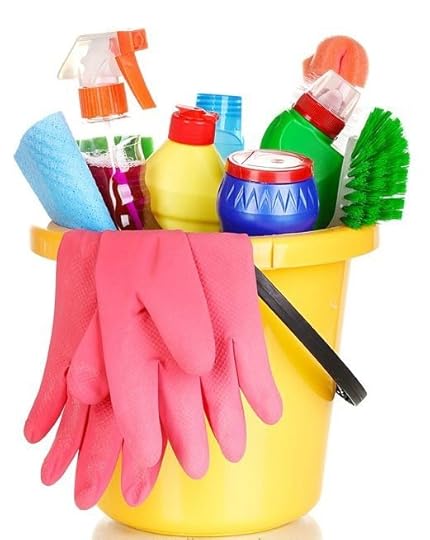
Housekeeping Skills
1. Basic Housekeeping Skills How to Clean
From making your bed to laundry basics, we all need basic housekeeping skills. This means everyone! Men and women, from college students to grandparents: keeping a tidy house is a life skill that ensures the health of your family, keeps you organized and able to find what you need, and saves you money so you can keep living the Good Life. If you aren’t sure where to start, try our Beginner’s Guide to Cleaning. If you need help with maintenance, try creating a cleaning schedule or start speed cleaning.
2. How to Cook…Something
Not all of us are gourmet chefs. I happen to love minimal-effort freezer meals. They allow me to get the “chore” of cooking out of the way, while still providing nutritional dinners for my family. If you’re not a big fan of the kitchen, have a few low-effort dishes in your repertoire you feel confident whipping up. Even if it’s just macaroni and cheese, the ability to cook a meal and eat it is a necessary life skill—it’ll save you when your takeout restaurant gets snowed in (or closes for a holiday).
3. Basic Sewing
There’s a movement among the blogosphere that dictates everyone should be a skilled seamstress, able to fashion a wardrobe for their families. I do not fit this profile. However, I do enjoy making creative crafts and occasionally I’m willing to break out my sewing machine for a quick, easy and fun project. Don’t have a machine? Being able to sew on a button or fix a hem by hand are simple skills that can extend the life of your clothes and they take just seconds to learn. It doesn’t have to be perfect!
4. Home Repairs 101
We all know DIY can help you save big time on home repair. You don’t have to shoot for pro-level electrician or plumber here, but when you’re able to refrain from forking over cash every time you have a minor household issue, it really does help your bottom line. Home Depot, Lowes and other home improvement chains offer classes and workshops to help you tackle your next home repair. Plus, there’s something really satisfying about re-caulking a shower or fixing a leaky faucet yourself!

5. How to Unclog a Toilet or Sink
Yes, it’s the “life skill” no one wants to have, but let me tell you: if you’ve ever clogged a toilet at a party or walked into an overflowing bathroom when someone’s flushed a washcloth (or their sister’s dress) down the toilet, you’ll be grateful you know how to wield a plunger. There are a surprising number of tutorials and YouTube videos on how to creatively unclog a toilet, but when in doubt, go with the old standby—the plunger.
6. How to Use Kitchen Appliances
From knowing how to deep clean your fridge and maintain its efficiency to understanding how to really use all the settings on your bread maker, kitchen appliances are sometimes mysterious and not often thought about. If you have anything in your kitchen you don’t use or that’s too complicated to use, ask yourself if it’s taking up space or if it’s valuable enough to invest 10 minutes of your time learning how to take advantage of the full functionality of the appliance. A surprising number of appliances are one-trick ponies that eat up space, but really understanding the settings on your food processor or your countertop grill can eliminate the need for a bunch of counter-clutter.

Technical Skills
7. How to Use a Calendar & Schedule
The ability to use a clock and a calendar is at the foundation of time management—which is a life skill in itself. A calendar simplifies your life and helps you get everything done, every day. You don’t have to live and die by your calendar, but learning how to block off time for activities and schedule events will make your life SO much easier.
8. How to Write
Now, I’m not saying everyone needs to be able to blog or that you need to be able to write a masterpiece at the drop of a hat, but having a basic understanding of sentence structure and written expression can take you far in life. Some people HATE writing with the fire of a thousand suns, while others feel it’s the only way they truly express their inner thoughts. If you’re of the former school, consider taking a basic creative writing class or finding a writing course online that can help you brush up on those skills
9. Public Speaking
Similar to writing, speaking—especially public speaking—can cause some of us to cower in the corner while others take to it like fishes in water. Public speaking is not my favorite thing, but everyone can learn some helpful tips for speaking better, like remembering to breathe, being prepared and connecting with your mission and expressing it to your audience. If you’re brave, take the plunge and sign yourself up for a speaking opportunity, a talk in church, or the open forum at your PTO meeting. The more you practice, the better you’ll become.

10. Effective Communication
Whether we’re talking about writing or speaking, communication is a vital life skill that encompasses both. No one makes it through this world alone, so learning to communicate with others will help you get where you need to be in life—and it’s definitely a learned skill. It’s about expressing your needs and desires, while understanding and relating to others’ needs and desires. Communicating with your spouse, your children and your friends can help you learn, grow and become stronger. It’s through communication that we form relationships and friendships, so being good at it means you’ll be successful in your interactions with others.
11. Technology 101
Okay, I still can’t always do everything on my phone to “untap its full potential” but basic computer skills are necessary in life today. At minimum, you should be able to email and use the internet for basic searches. Technology can be a powerful and useful tool that can truly simplify your life. So let go of the fear that you’ll “break” something or click on something that you can’t undo. It’s worth it.
12. How to Back Up Files
Speaking of mistakes you can’t undo, let’s hope you haven’t learned this one the hard way. All of us have been working on something only to watch it crash or disappear, leading to fear and panic. Save. Save your files and save them often. Learn to back up your phone and computer to the cloud or to an external hard drive. Nothing is more devastating than losing hours and hours of work because you didn’t back it up.
13. How to Protect Passwords
While it may seem like a minor detail, all too often I hear, “I just use the same password for everything.” ….DANGER! Passwords are like keys. Can you imagine using the same key for your car, house and office, then making copies of that key and stashing it all over town? That would be ridiculous! Well, using the same, unprotected password for everything is the equivalent. Try a password management tool like 1Password to help you simplify, keep track and protect your data.

14. How to Research (Using Something Other than Google and Wikipedia)
Googling an answer is the solution to almost everything these days, but everyone should understand that the results you get from a basic search often do not come from scholarly (or even reputable) sources. Wikipedia is an open source forum where anyone can add his or her own “spin” on information. WebMD, as helpful as it is, doesn’t answer every medical question. Rather than just Googling something, learn how to do real research when you need more in-depth information.
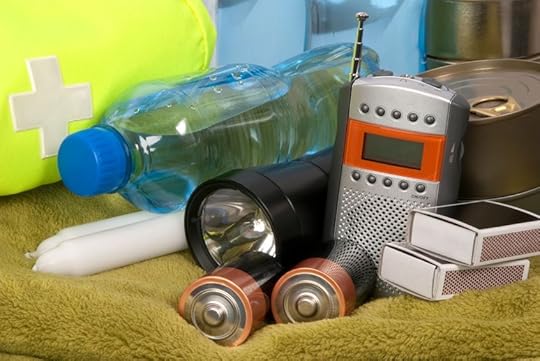
Survival Skills
15. How to Keep Yourself Safe
It’s natural human instinct to WANT to stay safe and avoid unsafe situations, but we see on the news and in our own lives, many people who go against that logic and put themselves in unsafe situations. This can be anything from driving home after that third glass of wine to walking in an unfamiliar neighborhood at night. Not to say you shouldn’t take risks, but you should learn to take precautions in all situations, from phoning a friend to being aware of your surroundings to just saying no.
16. Emergency Preparedness
If a disaster hit today, would you know what to do? What if your house burned down or you were in an accident? Emergency preparedness can sometimes seem extreme or scary, but having basic emergency skills and knowing what to do if a catastrophe strikes can help you gain peace of mind and keep you and your family safe from harm.
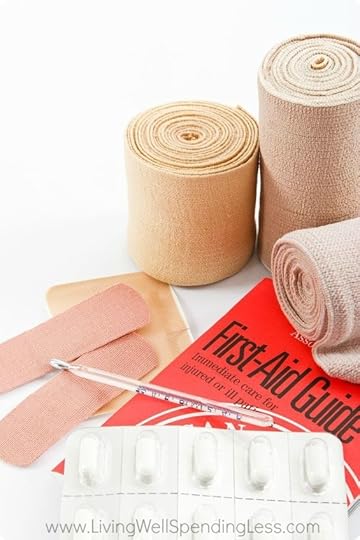
17. Basic First Aid
Do you know what to do if someone has a deep cut or a broken bone? Do you know the signs of a heart attack, a stroke or a concussion? As moms, we often have to be many things, but when we have to bring out the doctor’s bag, it can be our most critical role. Pick up a basic first aid book if you feel like your skills are rusty. It’s common to panic in emergency situations, but if you’re well versed in first aid, you’ll be able to rely on your instincts and knowledge and you’ll come to the rescue with a cooler head.
18. How to Survive Without Electricity
Like emergency preparedness, the prospect of going without electricity can be a little daunting and scary. How many of us go camping? (Or backyard camping?) Being able to unplug and entertain yourself without technology or even without the use of lights, television sets, and the stove is a skill, which at the very least will get you and your family through the next power outage, and at best, will help you communicate better and get away from your cell phones once in a while.
19. How to Read a Map
With GPS available on nearly every smartphone, I know map reading is rapidly becoming an obsolete skill. But aside from having to learn this skill for the occasional digital detox, map reading is vital, even if it’s just so you can gain a basic understanding of geography and route yourself accordingly. Anyone who’s tried to navigate a subway system or spent time in a rural area with spotty data service quickly realizes the merits of being able to read a good ol’ fashioned map. Brush up on your map skills and learn to take inventory of your location wherever you are. It’s a safe practice and it just may help you find your car in that mall parking garage someday.

20. Car Repair 101, including How to Fix a Flat Tire
There are lots of reasons NOT to learn how to fix a flat: it’s NO fun, you have AAA or another type of roadside assistance, or maybe you don’t have a car and use public transportation. That’s all great, and if it works for your lifestyle, by all means skip on to the next life skill. However, if you have a car, you should understand basic maintenance, even if it’s purely to keep you from getting ripped off at the repair shop. Brush up on your skills at DMV.org. Depending on where you grew up, pumping your own gas might seem laughable or may present a real challenge. If you’re from New Jersey or Oregon, you may be surprised when you travel to other states and can’t find a full-service station. Brush up on your basic car skills so you feel comfortable when you’re behind the wheel.
21. How to Write a Resume & Cover Letter
Even if you work from home or if you’re a fulltime homemaker, understanding how to write a basic resume and cover letter is a vital life skill, if you find yourself in need of employment. Getting a part-time job can help you provide for your family or bridge a gap in times of need. Having a creative, well-crafted resume and cover letter will help you get your foot in the door. Many employment firms, colleges and community education centers offer resume classes and many have staff who are happy to look over your resume and give you tips.
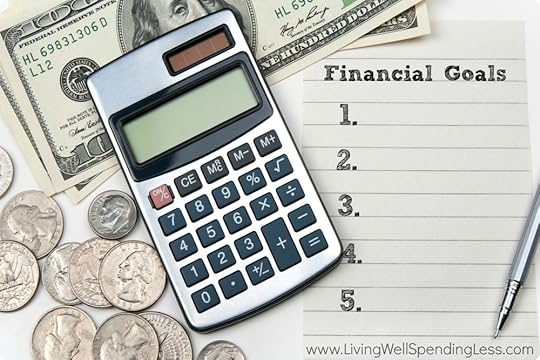
Money Management Skills
22. How to Budget
The ability to budget and be financially responsible is absolutely vital to your life skillset. Whether you’re just starting out on getting a handle on your finances or you’re an experienced, coupon-clipping, money-saving guru, understanding your budget is the first step to achieving financial peace and security. It’s a skill we can learn from a very young age and one we should build on throughout our lives. Get started with a spending freeze or go through our Budget 101 resources.
23. How to Avoid/Get Out of Debt
Oh, debt…we talk a lot about financial peace and getting yourself out of debt. Being debt-free is a freedom like none other—but it takes a lot of work to get there. Learning to live within your means is definitely a learned skill. Learning to slay your debt is about keeping your spending in check and managing a plan to pay off your debt quickly and efficiently. We refer to it as a war, slaying, tackling and fighting because it’s truly challenging! …but the amazing thing is, with a little practice, avoiding debt is a war you can win.
24. How to Make a Major Purchase
Maybe you’re about to buy a home or a car—or maybe just your first washing machine. Whatever it is, you should understand how to compare prices, how to do research via Consumer Reports, and how to make a smart purchase.
25. How to Write a Check Balance a Checkbook
This one seems so silly I almost didn’t put it in here, but then I thought about it. How many of us just use our debit card without writing things down in a checkbook? How many of us write checks and then sort of forget until they show up in our online banking? Being able to physically write a check and record it in your checkbook is a skill that will keep you in touch with your finances. It keeps you immediately accountable for what you’re spending. If you need to get a jumpstart on balancing your checkbook, try committing to write things down for a month and see if you notice a different in your spending patterns.
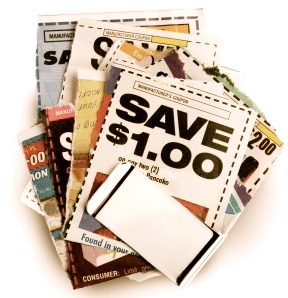
26. How to Use Coupons
Coupons will save you so much money! Yes, it’s a skill and it can seem a little daunting, but it’s really easy to get started. Go through our Beginner’s Guide to Coupons to get going. With a little organization and some practice, you’ll become a couponing queen (and you’ll rarely catch yourself paying full price for ANYTHING).
27. How to Organize Financial Records
Many of us would love to just toss receipts and forget about it, but a key component of being able to save, spend less and be fiscally savvy is getting your financial records organized and clear. This means tracking your expenses and writing down your budget. At any given time, you should be able to quickly ascertain where you are with your budget, what you have in your accounts, anything you owe, and your credit score. It will help you be honest with yourself about where you are financially.
28. Money Management/Investing
Once you have your debt paid off, understanding how to invest your money wisely is a huge learning experience. Even people who have money to spare have trouble with investments and making that money grow. Really, there are very few ways to “get rich quick” short of winning the lottery, and most investing and money management attempts have to be carefully vetted and researched, and completed with the assistance of a professional who understands your willingness and risk aversion so they can guide you to the best investments.

29. How to Select a Tax Professional
We all think about getting a great tax refund and what we might owe come tax time. While saving on taxes by doing them on your own can seem like a good idea, a tax professional can pay for themselves in spades. These people go to school to carefully study tax law. They’re up on the latest IRS changes and they can protect you and help you make the right choices. Find a proven professional by looking for an Endorsed Local Provider. This will ensure you find someone who is screened and comes highly recommended.
30. Effective Negotiation
Bargaining, bartering, negotiating—it’s a learned life skill many of us shy (or run) away from. Learning how to trade, make an offer, and be comfortable with asking for a better deal can save you money. It can also be a valuable skill when you’re faced with a tricky money situation (like asking for a raise) where negotiating is essential and expected. Don’t shy away from making a bargain. Challenge yourself to practice until you feel comfortable. Whether that means saying, “Is that the best you can offer?” over your next big purchase, or setting up a swap with a friend, practicing negotiating will help you learn to stop cringing whenever a negotiating opportunity presents itself.
31. Calculate a Tip
Many service industry professionals rely on tips to supplement their income and bring home a livable wage. I think most of us want to be generous tippers, especially for good service, but sometimes doing a quick calculation can be embarrassing when it takes more than a few moments to figure. Plus, there’s always that question of, “How much do I tip?” for things like the valet, at the nail salon, or in the powder room. Understanding tipping and learning easy ways to calculate a tip are pretty simple life skills to learn, but they make all the difference in assuring you’re reflecting the right appreciation and acknowledgment for a job well done.
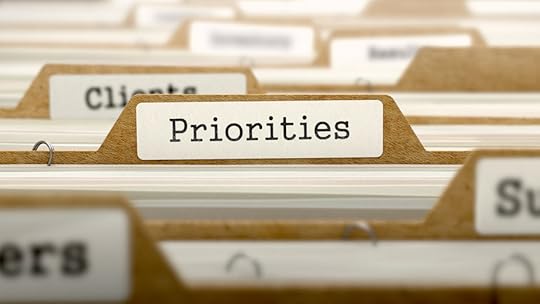
Self-Awareness Skills
32. Understanding Your Calling, Purpose & Mission
Understanding your higher purpose, your “calling” and what drives you helps set a foundation for everything you do. Crafting not only a family mission statement but a personal mission statement can help you keep your focus on your most important life goals.
33. How to Prioritize and What Your Priorities Are
We all have to learn how to prioritize the most important things each day, so we can take care of the most necessary (and often the toughest) tasks first. In the ER, doctors and nurses call it triage. It’s being able to assess a situation, size it up and figure out what needs to be tackled first. We’ve talked about it as “Eating the Frog.” Do the big, bad, tough things first and get them under control so you can move forward.
34. Understanding Your Values
Similar to understanding your mission, understanding your values (and refusing to compromise on them) will give you guidance through any decision. If honesty is one of your values, then next time you’re put in a compromising position you’ll never be tempted to lie—because you know honesty is so important to you. If family communication and connectedness is a top value, then you’ll use that to guide your decisions that affect your kids. Write out your values and refer to them whenever you’re facing a tough choice.
35. How to Focus
This is twofold: first, how to focus on a task when you’re facing a deadline or when you need to get something done; and second, how to focus your direction, your actions and your goals so you’re always in line with your values and holding true to your personal mission.

36. How to Have a Sense of Humor
Parents of tweens are aware of the time in their development when kids start to “get it.” Suddenly they can detect subtle tones in conversation, they learn to be sarcastic and yes, funny. Some adults still struggle with this, but finding the humor in any situation (and even the joy in the toughest ones) will get you far. Humor can help us deal with pain, stress and problems in life, and can help us find the silver lining.
37. Basic Etiquette
Gone are the days of Emily Post and worrying about being judged for failing to use the proper fork at the dinner table (unless your family is VERY formal). Understanding basic etiquette, however, is still relevant and vital in today’s society. Politeness is about consideration for the feelings of others and making sure you don’t do something that offends or frankly, grosses people out. (Like chewing with your mouth closed. And, for gosh sakes, clip your fingernails at home, not on the bus!)
38. Basic Civics/How to Vote
Say what you will about politics (and I know, many of us loathe talking about them and we don’t want to be “that guy” or “that gal” at dinner parties), but it’s part of the fabric of our American society—and it’s part of our civic duty to vote. If there’s a problem you see in the world or in your own neighborhood, voting gives you a voice and the ability to express your opinions toward change. You can’t complain about those in office if you refuse to vote. Plus, it’s good practice as an American Citizen to understand how the basic systems of government are structured and how they work.

Relationship Skills
39. Listening & Communication in a Partnership
Communication in a marriage or relationship (and even with your children) is very different than general communication skills. It’s about listening, being unselfish and empathetic and tackling the difficult conversations without prejudice. Words matter: they can be hurtful or beautiful. They can bring us closer to each other and closer to God, or they can rip us apart. Learning to think before you speak and listen more than you talk are communication tools that will serve you throughout your life and in all your close relationships.
40. Valuing & Expressing Respect
At the heart of every successful marriage, there’s mutual respect. I don’t believe any of us have the perfect marriage (I know I don’t!) but respecting our spouse and our differences can help your marriage become stronger and happier. Learn to view your spouse through the lens of another human being with feelings, desires and wants that yes, may not always match your own. Understanding the underlying motivations and emotions underneath it all and respecting them as valid will strengthen your marriage.

41. Valuing & Expressing Love
Love is about buying gifts and spoiling your children and spouse, right? WRONG. Love is about quality time, affection, expression and understanding. We all know what Hollywood and Hallmark say love is, but we also know love is about so much more. To love and to be loved is truly a life skill and something that takes work. After all: “Love is patient, love is kind. It does not envy, it does not boast, it is not proud. It does not dishonor others, it is not self-seeking, it is not easily angered, it keeps no record of wrongs. Love does not delight in evil but rejoices with the truth. It always protects, always trusts, always hopes, always perseveres.” —1 Corinthians 13:4-8.
42. How to Accept Compliments & Criticism
Accepting both compliments and constructive criticism isn’t easy! Oftentimes we fail to accept compliments with grace or downplay them and get embarrassed, and yet, we’re sometimes crushed by criticisms (even if they’re valid) and we take them personally and to heart. Learning to simply say, “thank you” when you get a compliment and learning to view criticism as feedback (assess it, then apply it or throw it away) can serve you well.
43. Emotional Intelligence
Today’s moms have likely heard all the buzz about social-emotional learning. If you’re in the business world, you’ve probably also read a lot about how social and emotional intelligence are important in the workplace. Why is this? Well, because people are finding that being emotionally intelligent can be just as important as understanding the nuances of engineering or physics. As the human population grows and we become more global in our interactions, being sensitive to others, understanding emotions and learning to harness them in a positive way can be a make or break life skill. Fortunately, you can work on your emotional intelligence throughout your life and apply it throughout.
44. How to Write Thank You Messages
Thank you cards are a bit of a lost art, but they really brighten the day of those who receive them. They’re a great way to express gratitude and appreciation to others. Writing a thank you note is simple: say thank you for x, y, z and tell the person how you plan to use their gift or the result of their help. Reiterate what it means to you personally and then close. It’s a skill that takes very little time and means so much.
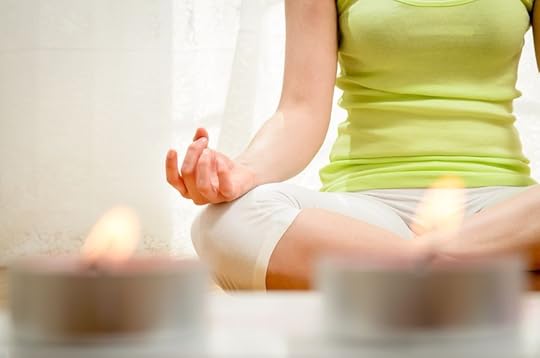
Wellness & Mental Health Skills
45. Critical Thinking Problem Solving
If you took a logic class in college or you’ve experienced an “If this, than that” question on a test, then you’re familiar with logic. Unfortunately, it’s not a skill everyone has. Yes, this life skill is about your ability to prioritize, but it’s also about your ability to break a situation down and make choices. It’s about measuring possible outcomes and building your thinking skills to tackle life’s little bumps. To improve your problem solving skills, try brain-training programs like Lumosity or Fit Brains. When it comes to problem solving skills, if you don’t use ‘em, ya lose ‘em. That’s why it’s important that we’re constantly learning.
46. Synthesizing
A critical thinking skill, synthesizing is the ability to combine parts of a whole in a new and unique way. This learned skill boosts your adaptability and the way you “roll with the punches.” It’s part of the analysis and evaluation of any given situation. Think of it like a chef—you can take different components of a meal, break them down, and then put them together in a new and delicious way. In life, it’s a critical thinking skill that’s considered “higher level thinking”… something we often slack on after college.

47. Self-Discipline: Exercise & Nutrition
The ability to discipline yourself enough to make healthy choices about your food and exercise is a learned skill. It’s part of “bigger picture” thinking: achieving the understanding that if you eat something now, you might pay for it later. It’s about making a healthy meal for your family or taking a walk rather than hauling the kids through the McDonald’s drive-thru. No one can be perfect all the time, but when you view exercise and nutrition as self-care, rather than punishment, it helps to reframe. Start with small steps, like taking a walk or adding a vegetable to every meal, and build on the positive.
48. Self Care: Sleep & Hygiene
We get so wrapped up in caring for others we forget about the importance of taking care of ourselves. This means yes, sleep and rest, which is simply critical to our health. It also means taking time for yourself—showering, dressing in clean clothing, putting on makeup, styling your hair, or doing what you need to do to feel clean, confident and at your best. It’s funny because, as moms, even though we get after our kids to wash their hands, take a bath and brush their teeth, we sometimes get so busy we forget to care for ourselves. (Well, hopefully we at least brush our teeth.) Give yourself a spa day or treat yourself to a luxury at home. Learn to pamper yourself a little. Catch up on all those things that can fall by the wayside when we’re busy, like dying our hair, whipping up a facial mask, or getting a pedicure. You deserve to feel good. Learn about proper sleep patterns and ways to streamline your beauty routine so you can get the most out of your “me time.”

1 Life Skill: How to Find Happiness
The Good Life is about finding your happiness. It’s about simplifying and focusing on the genuine and true things in life that really make us happy, including the most important: family, friends, and our relationship with both God and ourselves. So often we forget our way to happiness. We get bogged down with negative feelings and the idea that life isn’t fair. (Newsflash—it’s not.) Happiness can literally make you live longer and can certainly improve your health and quality of life. It’s my wish for each and every one of us to find our happiness today and live our lives free from the baggage that weighs us down.
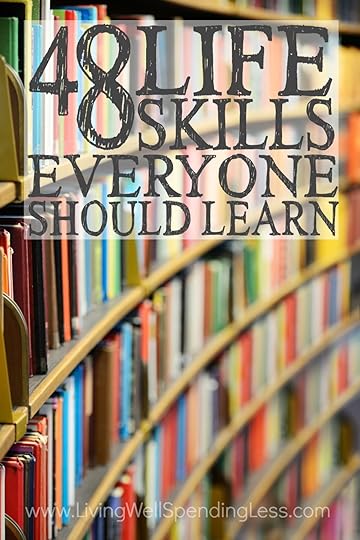
The post 48 Life Skills Everyone Should Learn appeared first on Living Well Spending Less®.

